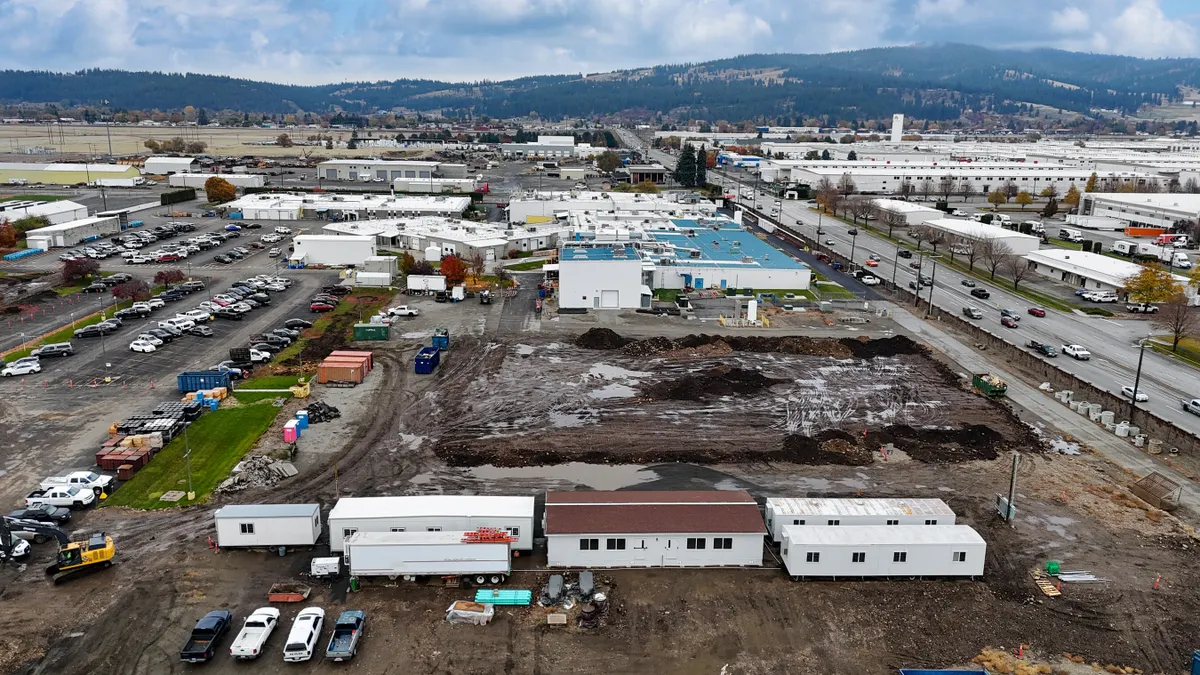Against the wave of retail closings, the Big Apple and its suburbs are holding a lead in retail construction across the country. The value of work underway in New York City, northern New Jersey and Long Island inched up 4% from $1.2 billion in 2017 to $1.3 billion last year, according to a new study from the New York Building Congress.
Meanwhile, seven of the top 10 metro regions registered double-digit declines, including Miami (16%), Dallas-Fort Worth (17%), Houston (33%), Chicago (13%) and Los Angeles (38%).
Brick and mortar in decline
In the expansion period following the Great Recession, national retail construction grew moderately in 2012 and 2013, stalled out from 2014 to 2016 and began its slide in 2017 with a 5% drop followed by a 21% plummet in 2018, according to the report. A surplus of constructed space coupled with a chain of bankruptcies and store closures for major retailers like Sears, Payless ShoeSource and more helped drag down these numbers, the study found.
The rise of online and “e-tail” shopping led by Amazon is largely behind this disruption to the traditional brick-and-mortar landscape. U.S. retailers have announced 5,399 store closures compared to 2,396 store openings year to date, found a March report from Coresight Research.
Manhattan stands as an outlier, though, with the newly opened $25 billion Hudson Yards development leasing out 720,000 square feet of retail space and heavy hitters like Ikea and Nike exploring new store formats there. The borough had a larger share of the city’s retail construction (58%) from 2015 to 2018 than the other four combined, according to the Building Congress report, and was followed by Brooklyn (18%) and Staten Island (14%) at second and third.
Retail’s share of the building boom
New York City is currently in its second-largest building boom of the century, the Building Congress noted, with $196 billion in total construction starts across all boroughs from 2015 to 2018. Retail construction accounted for $4.7 billion of that amount, according to the study, and almost 7.5 million square feet.
While the overall nonresidential category steadily climbed during that four-year period, retail slipped year-over-year from $1.9 billion in 2015 to $1.2 billion in 2016, $777 million in 2017 and $773 million in 2018.
The top retail groundbreakings in that window, according to the study, were The Shops and Restaurants at Hudson Yards in Manhattan for $600 million; the $200 million South Street Seaport Pier 17 in Manhattan; the $150 million Staten Island Mall; and the $70 million The Boulevard on Staten Island. These starts represent a mix of new construction and renovations, categories which were each valued at $2.5 billion in the city from 2015 to 2018.
In 2013, the value of retail alteration and renovation starts began to outpace the value of new retail construction nationally, the study noted. In New York City, the flip held off until 2016, when 64% of all retail construction was either an alteration or renovation. But in 2018, new starts accelerated again and alterations and renovations hovered just above at 51%.
Incorporating experience, live-work-play
The $25 billion Hudson Yards development is emblematic of New York City’s current boom and representative of the live-work-play trend that’s supporting retail construction across the city. Developers are responding to demand from residents, commuters and tourists for a range of options in destinations like Hudson Yards, Manhattan West and Essex Crossing, the report said, which has been a boon for retail construction. In fact, seven of the top 10 largest retail projects in New York City from 2015 to 2018 are part of larger mixed-use projects.
Another trend at play, according to the report, is rising demand for experiential retail, with shopping locations that are more visually attractive, tech-driven and immersive than traditional malls. One megamall just outside Manhattan in East Rutherford, N.J., will pair about 450 retailers with attractions such as a hotel, spa, aquarium, theme park and indoor snow skiing. Developer Triple Five is set to open the $5 billion American Dream Meadowlands project in August.
But the trend has also played out on a franchise level, as retailers pare down their number of stores to generate more impact around fewer, experience-driven locations. Nike, for example, opened its six-floor, 69,000-square-foot “House of Innovation” in Manhattan, featuring a personalized walkthrough, customization opportunities and more.




















